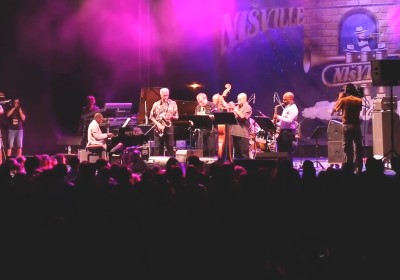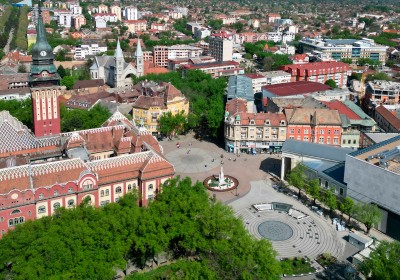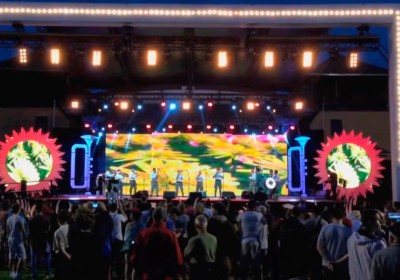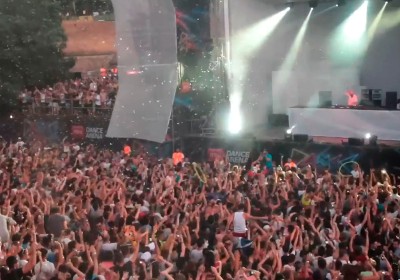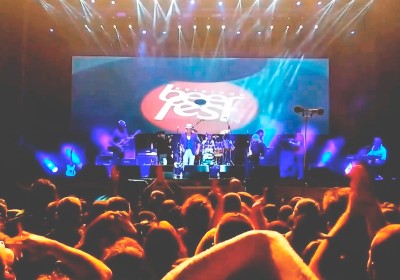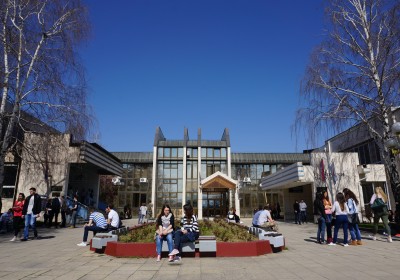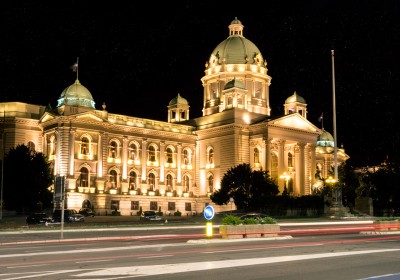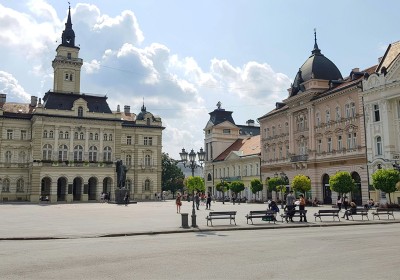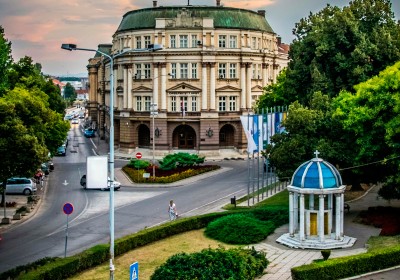Zaječar: Exploring Serbia’s Roman Legacy
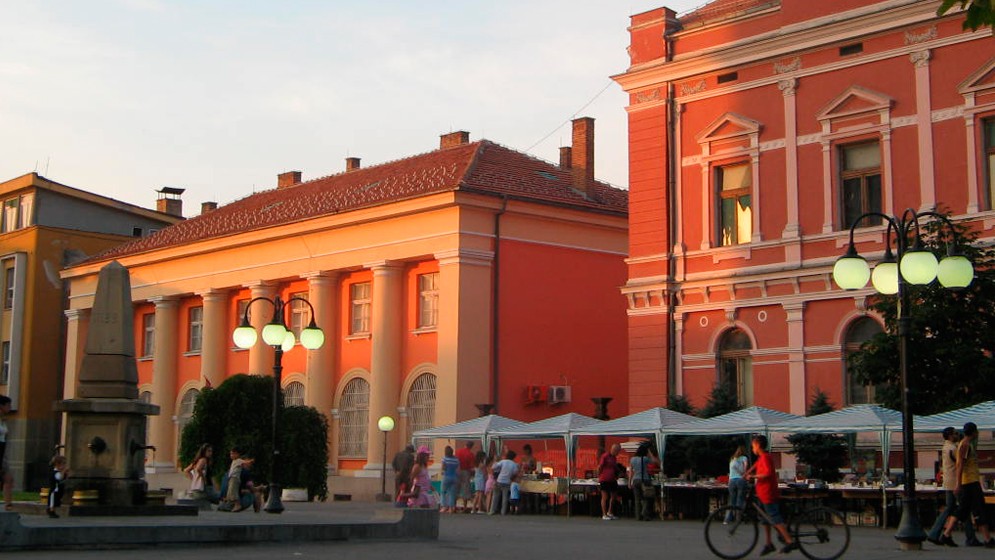
1. City center of Zaječar
Zaječar, a city in eastern Serbia, is the administrative center of the Zaječar District. Located in the Timok valley, at the confluence of the Black and White Timok rivers, the city sits at an elevation of 137 meters above sea level. According to the 2022 census, Zaječar’s administrative area has a population of 48,621, making it a mid-sized Serbian city with a rich history and vibrant culture.
The city’s strategic location has played a significant role in its development throughout history. Zaječar is situated at the crossroads of major routes: one leading from Paraćin through Zaječar to Vidin and Sofia in Bulgaria, and another connecting Niš to the Danube river. This positioning has given Zaječar particular international importance as one of the shortest routes from Europe to northern Bulgaria, southern Romania, and further to the Black Sea basin.
Zaječar experiences a humid continental climate, characterized by warm, dry summers and moderately cold winters. The average annual temperature is around 11.4°C (52.5°F), with July and August being the hottest months and January the coldest. The city receives an average of 610.4 mm (24.03 inches) of precipitation annually, distributed relatively evenly throughout the year.
Historically, Zaječar has been a melting pot of cultures and civilizations. The area was inhabited by Triballi and Moesi in ancient times, later becoming part of the Roman Empire. The city’s name first appeared in Ottoman records in 1466. Zaječar played a significant role in Serbia’s struggle for independence, being liberated from Ottoman rule in 1833. The city has since been a witness to key historical events, including the Timok Rebellion in 1883 and both World Wars, shaping its identity and cultural landscape.
Key Attractions
Zaječar offers a rich tapestry of historical, cultural, and natural attractions that cater to diverse interests. From ancient Roman ruins to vibrant music festivals, here are some of the must-visit sites and experiences in and around the city.
1. Felix Romuliana (Gamzigrad) – UNESCO World Heritage Site
Just outside Zaječar lies the crown jewel of the region’s attractions, Felix Romuliana. This archaeological site, recognized by UNESCO, showcases the remains of a Roman imperial palace complex built in the late 3rd and early 4th centuries. Commissioned by Emperor Gaius Valerius Galerius Maximianus, it was named after his mother, Romula. The site features impressive fortifications, basilicas, temples, hot baths, and a unique memorial complex. Its blend of ceremonial and memorial functions makes it a testament to Roman building traditions and the ideology of the Second Tetrarchy period.
2. National Museum of Zaječar
For those keen to delve deeper into the region’s rich history, the National Museum of Zaječar is a must-visit. The museum houses an extensive collection of artifacts, with a particular focus on findings from the Felix Romuliana archaeological site. One of its prized possessions is the head of the Emperor Galerius statue, offering visitors a tangible connection to the area’s Roman past. The museum provides valuable insights into the historical and cultural evolution of Zaječar and its surroundings.
3. Gamzigrad Spa (Gamzigradska Banja)
Located just 11 km from Zaječar, Gamzigrad Spa offers a perfect retreat for relaxation and wellness. The spa is renowned for its thermal springs, which have been used for their therapeutic properties since ancient times. In addition to its healing waters, the spa complex also features modern sports facilities, making it an ideal destination for both health-conscious travelers and those seeking active recreation in a serene setting.
4. Temple of the Most Holy Theotokos (Church of the Nativity of the Blessed Virgin Mary)
In the heart of Zaječar stands the Temple of the Most Holy Theotokos, also known as the Church of the Nativity of the Blessed Virgin Mary. This Orthodox church, whose construction began in 1834 under the patronage of Prince Miloš, holds significant historical and spiritual importance. The church features a high bell tower with five bells, four of which were gifted by the city of Zaječar. Its construction marked a pivotal moment in the city’s religious life, as it was built shortly after the region’s liberation from Ottoman rule.
5. Suvodol Monastery
Nestled in the southeastern part of Zaječar municipality, in the village of Selačka, lies the Suvodol Monastery. Dedicated to the Birth of the Holy Virgin, this monastery is considered one of the oldest endowments in Serbia. Local tradition associates it with Prince Lazar, although the exact date of its founding is unknown. The current church, rebuilt in 1869, is a single-domed structure with a rectangular base, presenting a harmonious and representative architectural ensemble. Its interior is adorned with more recent frescoes, and the iconostasis features valuable 19th-century icons. Interestingly, it’s believed that a piece of the relics of St. Panteleimon was placed in the altar during construction, making it a site of pilgrimage for those seeking healing.
6. Monastery of the Holy Apostles Peter and Paul in Grlišta
Located near the village of Grlišta, about 14 km from Zaječar on the shore of Lake Grliška, this monastery holds significant historical importance. According to available data, it dates back to the early Middle Ages. The monastery played a crucial role during the First Serbian Uprising, serving as one of the centers of the uprising in Crna Reka. The current church, though small, features a rectangular base with a vestibule, porch, and dome. Its iconostasis, the work of an unknown painter from the late 19th century, adds to its artistic value.
7. Radul-Bey Residence
Situated on Ljube Nešića Street, the Radul-Bey residence stands as a prime example of traditional architecture of wealthy families in Zaječar. This beautifully preserved house offers visitors a glimpse into the lifestyle of the city’s affluent residents in the past. Its architectural style and interior decor provide valuable insights into the cultural and social history of Zaječar.
8. “Zoran Radmilović” Theater
Named after the famous actor Zoran Radmilović, who was born in Zaječar, this theater has been a cultural cornerstone of the city since its establishment on February 2, 1947. Initially called the “Regional National Theater,” it was renamed in 1992 to honor Radmilović. The theater hosts the annual “Dani Zorana Radmilovića” art festival, making it a vibrant center for performing arts in the region.
9. Kraljevica Park
Kraljevica Park, often referred to as the “lungs of the city,” is a beloved natural oasis in Zaječar. This park-forest area provides a refreshing retreat for both locals and visitors. Located on a hill overlooking the city, Kraljevica offers beautiful views and a network of walking paths, making it an ideal spot for leisurely strolls, picnics, or simply enjoying nature. Unfortunately, in recent years, the park has faced challenges with tree health, highlighting its importance to the community and the need for conservation efforts. Despite these challenges, Kraljevica remains a significant green space in Zaječar, offering a peaceful contrast to the urban environment.
10. Historical Archive
The Historical Archive of Zaječar is an important cultural institution that preserves the rich history of the city and the surrounding region. Housing a wealth of historical documents, photographs, and records, the archive serves as a crucial resource for researchers, historians, and anyone interested in delving deeper into Zaječar’s past. The archive’s collection spans various periods of the city’s history, from its early mentions in Ottoman records to its role in modern Serbian history. For history enthusiasts, a visit to the Historical Archive can provide valuable insights into the events and people that have shaped Zaječar over the centuries.
Other Information for Travelers
Zaječar’s cultural scene extends beyond its historical sites, offering visitors a taste of contemporary Serbian art and music. The Gitarijada Rock Music Festival, one of the oldest and most significant music events in the region, takes place in Zaječar every summer. This festival, which has been running for over 40 years, showcases demo bands and promotes young rock musicians. It’s a perfect opportunity for music enthusiasts to experience the vibrant youth culture of Serbia.
Art lovers should plan their visit around the ZALET Festival (stylized as ZA*73T), dedicated to contemporary art. This event organizes various manifestations including exhibitions, concerts, literary evenings, and experimental theater performances. Another notable cultural event is the International Art Colony “Gamzigrad,” held annually in Gamzigrad Spa. This colony brings together artists of different generations and aesthetic orientations, including painters, sculptors, ceramicists, and art photographers.
For those interested in outdoor activities, Zaječar and its surroundings offer plenty of opportunities. The city is situated in a region rich in natural beauty, with three artificial lakes nearby: Grliško, Rgotsko, and Sovinac. These lakes provide excellent spots for relaxation and recreation. Nature enthusiasts and sports lovers can enjoy activities such as hiking, fishing, and birdwatching in the surrounding countryside.
Zaječar’s cuisine reflects its rich cultural heritage. While in the city, visitors should try local specialties at traditional restaurants. One recommended spot is the small tavern “Ćevabdžinica kod Mede,” known for its delicious food and pleasant atmosphere. For those looking for a more diverse menu and ambiance, the restaurant at Motel “Beba” offers a comfortable dining experience.
Travelers should be aware of Zaječar’s climate when planning their visit. The city experiences hot, dry summers with average temperatures around 22.8°C (73°F) in July, and cold winters with average temperatures around -0.1°C (31.8°F) in January. The best time to visit depends on personal preferences and planned activities, but late spring and early autumn often offer pleasant weather for sightseeing and outdoor activities.
- The original uploader was PANONIAN at English Wikipedia, CC BY-SA 3.0, via Wikimedia Commons
